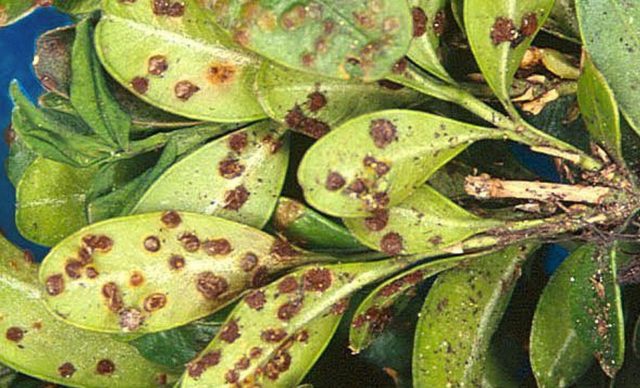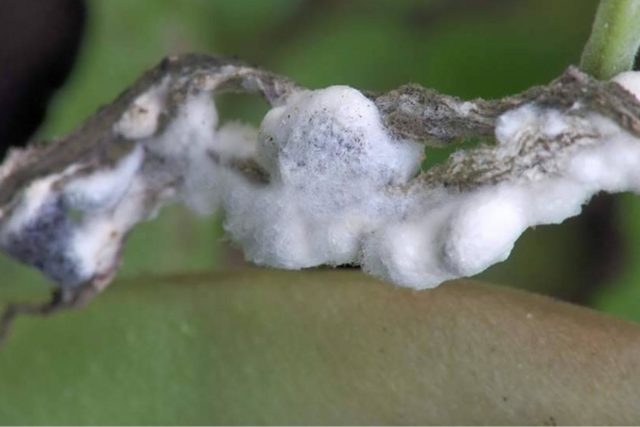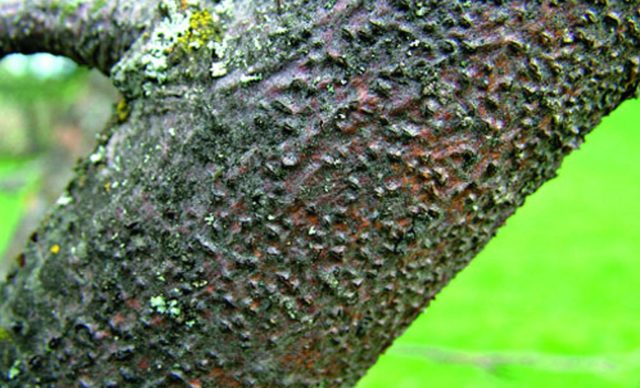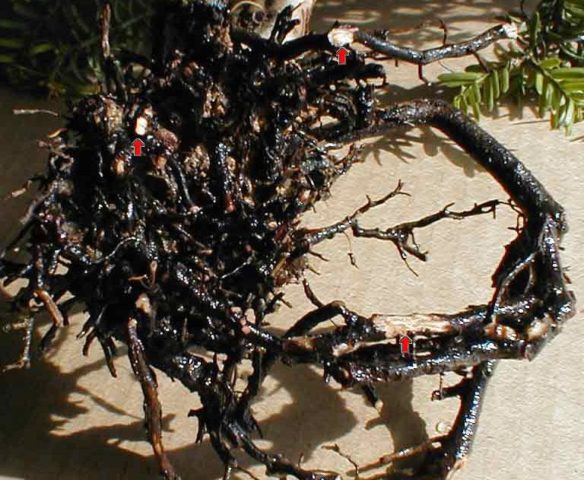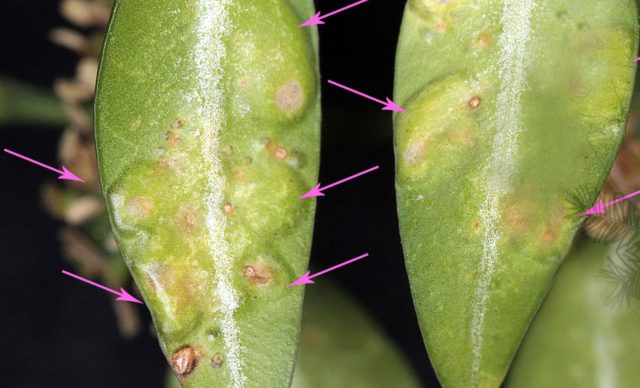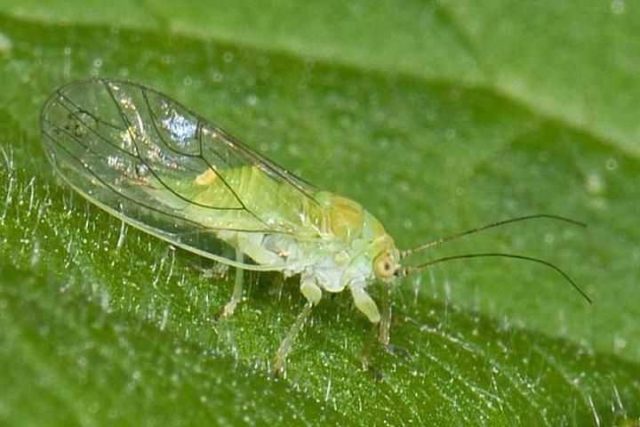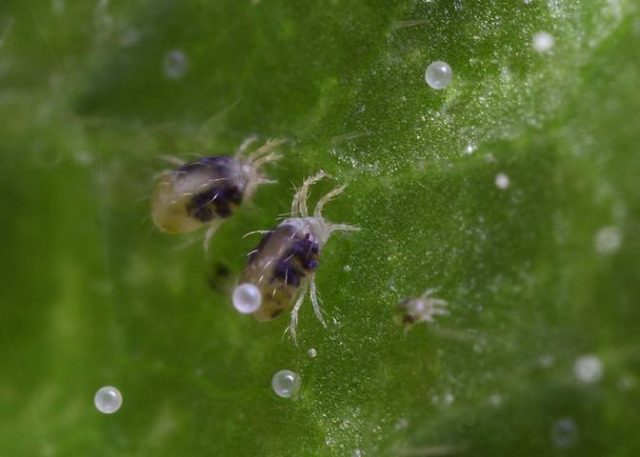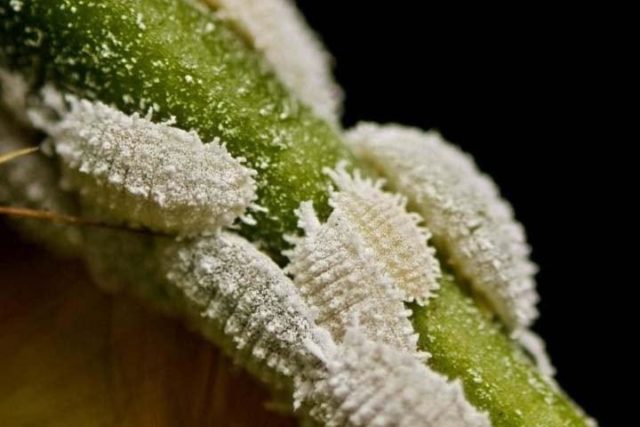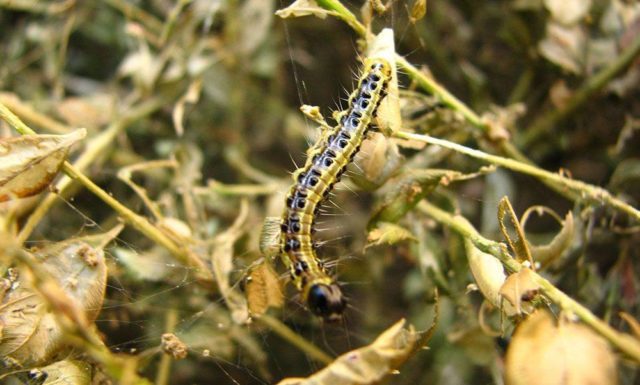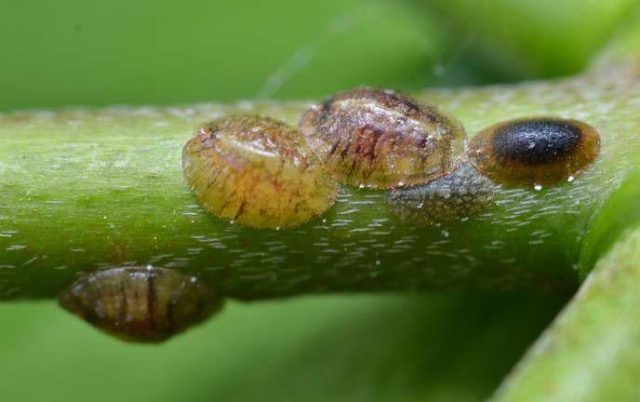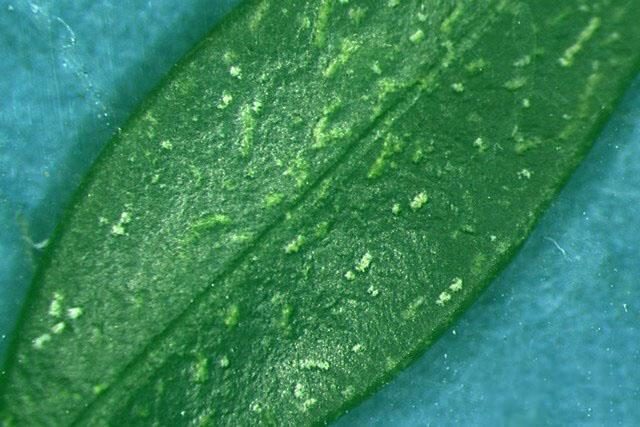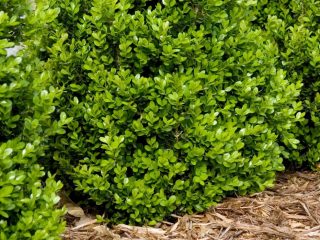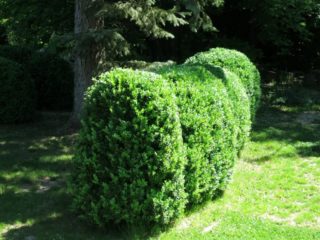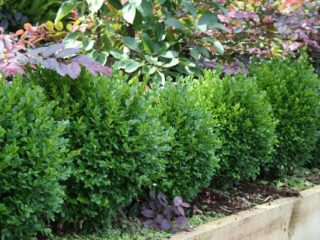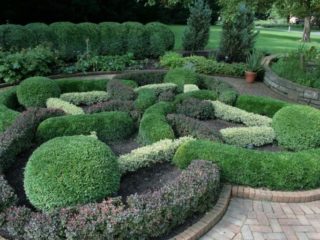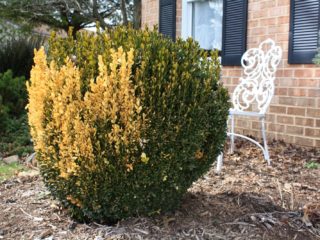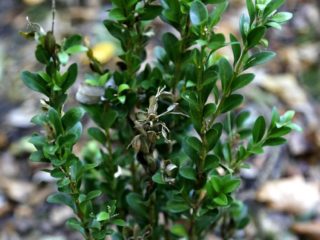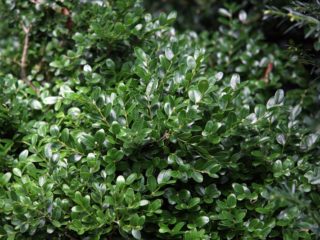Content
Boxwood, or buxus, as it is also called, is a very beautiful ornamental plant. The care is quite unpretentious. But, at the same time, it is often exposed to various diseases and pests that can lead to the death of the bush. If the appearance of the boxwood has changed, and its foliage has begun to dry, turn yellow, become covered with spots or holes, then it is necessary to find out the cause of this condition as soon as possible. To correctly identify boxwood diseases, a photo and a detailed description of the signs of infection will help gardeners take timely measures to save it.
Boxwood diseases and their treatment
Like many other ornamental plants, boxwood often suffers from various diseases. Most of them are fungal in nature and are caused by spores of a certain type of fungus. There are several major common diseases. Below are the signs of various boxwood diseases, methods of their treatment and photos.
Boxwood leaf spot
The disease has another name - septoria. The causative agent is many varieties of fungi of the genus Septoria. Light spots with a bright black edging grow on the leaves and shoots. The process continues with the multiplication of spores of the fungus, as a result of which the leaves turn brown. Boxwood becomes severely weakened and vulnerable to other diseases and pests. Affected leaves fall off prematurely, young shoots die, bushes stop blooming.
The fight against the disease is carried out in 3 stages:
- Affected leaves and shoots are removed in such a way that a healthy part of the boxwood is captured during cutting.
- The resulting sections are disinfected.
- The plant is sprayed with fungicidal agents - Profit, Ridomit Gold or Bordeaux liquid.
Cool, humid weather encourages the spread of the fungus with wind, rain, insects. Spores of the fungal causative agent of the disease can persist for a long time in seeds, on shoots and garden tools. To stop the activation of the fungus, it is necessary to destroy plant debris and disinfect all tools.
The withering away of foliage and shoots
The disease manifests itself in the spring, during the growth of shoots and young foliage. This happens as a result of damage to the plant by the fungal pathogen Volutella buxi. Deciduous tops of the shoots begin to change color. First they turn red, after a while - bronze, at the end of the process - yellow. The branches affected by the disease die off. If diseased shoots are cut, peeling bark and dark circles, alternating with colorless wood, will become visible. Leaves and stems become pink in wet weather.
The fungus is almost impossible to remove. It is resistant to a variety of chemicals designed to combat these pathogens. Boxwood can only be saved by removing the damaged stems. To do this, they are cut off, and the fallen leaves are collected and taken out of the site. In case of severe damage to the entire boxwood bush, you can resort to using fungicidal agents, the composition of which contains copper.
Shedding leaves
It is a more serious and dangerous leaf shedding fungus that is taking over new surfaces at an amazing rate. The foliage, and behind it, the young shoots die off and fall off. At the same time, oblong spots of a dark shade appear on the shoots.
The disease becomes active mainly in the summer, in bad weather. As a result of the disease, boxwood may die completely or partially. In order to combat the pathogen, it is necessary to destroy all infected leaves and branches, including those that have already fallen. To carry out preventive protection measures, the bushes are treated with fungicides before the onset of bad weather. The photo shows the successive stages of boxwood disease.
Rust
Airborne by spores of the fungus Gymnosporangium sabinae. When infected, brown pads appear on the upper and lower surfaces of the leaves. The affected foliage should be collected. The plant must be treated with Agipa-Peak, Topah or Bordeaux mixture.
Fungal spores infect pear leaves and can fly very far away. Therefore, both plants should not be planted next to each other. Affected boxwood shoots must be carefully trimmed and removed.
Stem root rot
White rot is the most severe boxwood disease, which can develop very quickly and is characterized by the following symptoms. The top of the bush withers, the lower part of the stem rots. Leaves lose color, become watery. Formation of white plaque is possible. On the surface of the stem, large black growths appear - the sclerotia of the fungus. They can also be seen in the section of the shoot.
The pathogen enters the plant from the soil through the lower part of the stems. The disease manifests itself especially actively in conditions of high air humidity, at low temperatures of 12-15 ° C. The spores of the fungus spread with the wind.
To strengthen the plant and prevent infection, it is recommended to use foliar feeding:
- urea - 10 g;
- copper sulfate - 2 g;
- zinc sulfate - 2 g.
All components should be dissolved in 10 liters of water.
Cytosporosis or rotting boxwood burn
This is a very dangerous infectious disease of the plant bark. The affected areas become dry and begin to crack at the border with healthy ones. The bark is covered with a large number of dark tubercles, containing inside the fungus-causative agent of the disease. The damaged areas take on the appearance of "goose bumps". Leaves and flowers dry up, but do not fall off for a long time.
In the case of penetration of the fungus into the deeper layers of the tree, gum flows out of the resulting cracks, the solidification of which leads to a violation of the conductivity of the vessels of the boxwood. The infection enters the plant through any violation of the integrity of the bark, regardless of the nature of their origin - wounds, cuts, scratches, cracks. The death of the branches occurs in 1 - 2 months. Gradually multiplying, the fungus covers an increasing area of the bush and, getting into the wood, can lead to the death of the entire plant.
In the early stages of the disease, until the fungus has gone deep into the bark, it is removed with a knife, leaving only healthy tissue. The remaining wounds are disinfected with 2% copper sulfate and covered with nigrol putty or garden varnish. It is recommended to additionally bandage very large wounds.
Decay of roots
This destructive process and many other painful conditions of boxwood can be caused not only by fungal pathogens and improper care. An ornamental plant does not like excessive moisture in the soil. Frequent watering, especially during the cold period, leads to the fact that the root system suffocates, overcooles and decays. The plant ceases to receive the required amount of moisture and nutrients and, ultimately, dries up.
To prevent the occurrence of such a disease, watering boxwood must be reduced in autumn and winter.
Boxwood pests and control
In addition to the listed diseases, various boxwood pests that affect the plant deliver a lot of trouble and troubles to gardeners. The methods of dealing with them depend on their type and the degree of harm caused. The most common boxwood insects are:
Boxwood gall midge
When a boxwood is attacked, this mosquito-like parasite creates growths that hide inside orange larvae no more than 2.5 mm in size. On the leaves, noticeable convex yellow spots appear with swollen nodules in the lower part. The affected plant turns yellow very quickly and dies.
At the first symptoms of the appearance of gall midge, boxwoods are treated with Bitoxibacellin, Fufanon, Molniya, Aktellik, Karbofos-500. Processing is carried out 2 - 3 times a week, from the second half of May to mid-June during the appearance of insects from pupae.
Leaf flea
This small yellow insect infects the leaves, causing them to swell, curl, bend in the form of a spoon and become covered with a coating of white. The sticky discharge of fleas forms a waxy coating, under which the larvae live. Pests feed on boxwood juice.
You can fight these insects with insecticides. The affected foliage is removed, the boxwood is sprayed with mineral oil. In most cases, the damage caused by these beetles does not cause significant damage to the boxwood bushes.
Spider mite
Spider mites are most common in warm climates. It actively manifests its effect in conditions of high temperature and dry air. Small insects no larger than 0.5 mm settle on the underside of the leaves. The branches of the boxwood are entangled in cobwebs. As a result of tick punctures, the leaves first become covered with a small yellow speck, then discolor and die off. Boxwood is losing strength.
Spraying with chemicals such as Fufanon or Actellic will help get rid of a large number of ticks. If there are few insects, they can be washed off with a soapy liquid made from 120 g of laundry soap and 4 liters of warm water. Then the boxwood should be treated with an oil spray.
Boxwood felt (worm)
Sucking insects, called hairy lice, are visible to the naked eye. They form whitish discharge on the veins and cuttings of leaves, similar to wax traces, in which colonies of these pests develop. Worms lay numerous eggs wrapped in felt-like bags on the back of the leaves. The period of active development falls on June and the second half of August. The foliage of the boxwood turns yellow, falls off. If you do not take timely protective measures, the death of the plant occurs after 2 - 3 years.
In order to combat felting, first of all, it is necessary to remove the damaged branches and leaves of the boxwood. The bushes are sprayed with mineral oils, which form an oil film. Insects suffocate under it and die. You can also treat boxwood with methyl bromide.
Boxwood moth
The moth causes significant harm to the boxwood. Lemon-green caterpillars entwine the entire tree in thick cobwebs and feed on the pulp of the foliage. The leaves change their color. The bushes dry quickly, which is accompanied by an unpleasant odor.
Boxwood is sprayed with biological insecticides, depending on the level of development of the larvae. Not only the plant itself is treated, but also the soil around it within a radius of 40 - 50 cm. In the fight against boxwood moths, such drugs as Bi-58, Decis, Fastak, Sharpei, Vega, Atom, Fury have proven themselves well. These powerful agents should be used with extreme caution. In the early stages of the disease, it is better to use the insecticide Dimilin, which is safe for humans and animals.
Shields (false shields)
Insects, similar to white and golden brown bumps, live on the surface of boxwood stems. Microscopic pests can often be removed with a regular needle. You can also remove them with an old toothbrush. This method is completely safe for boxwood.
After processing, the stems are wiped with kerosene using a piece of cotton wool. The resulting kerosene film causes insects to suffocate and die. Spraying the boxwood with an oil spray will restore the leaves that have lost their shine. With a significant number of pests or when a large number of boxwood bushes are infested, it is better to treat the planting with insecticides.
Gall (four-legged) tick
When attacked by a pest, the buds and growing leaves of the boxwood are damaged. On them pubescent oblong growths appear - galls, which gives the impression of their swelling. While ticks rarely cause significant damage to boxwood, they are difficult to control.
Treatment of the consequences of the influence of diseases and pests on the growth and health of boxwood takes quite a long time and requires some knowledge and skills. To prevent this, it is recommended that certain preventive measures be taken regularly.
Prevention of diseases and pests of boxwood
Under the influence of the attack of pests and the negative manifestation of various diseases, a beautiful ornamental plant boxwood can very quickly lose its strength and subsequently die. Timely implementation of some preventive measures will avoid such serious consequences.
The main measures for the prevention of the onset and development of boxwood diseases include:
- proper care - feeding, pruning, treatment with drugs;
- disinfection of instruments;
- removal of damaged parts of the plant;
- maintaining a stable temperature and humidity level when growing ornamental boxwood indoors.
Often the cause of plant diseases is an elementary non-observance of the rules of care and growth. A change in the appearance of bushes can signal the following:
- Drying and curling of leaves with a lack of moisture. Boxwood should be watered more often and more abundantly.
- Loss of green color intensity in foliage - in case of excess sunlight. It is necessary to create shading conditions.
- The appearance of yellowness indicates a drop in low temperatures. The plant needs additional heating.
- Leaves acquire a reddish hue - with insufficient nitrogen intake. Boxwood bushes should be regularly fed.
In the fight against pests and diseases of boxwood, you can take advantage of the influence of their natural opponents. Insects such as ladybugs, earwigs, predatory mites, hoverflies, lacewing and others eat aphids and fungal spores. To attract these assistants to the garden, you should sow dill, mustard, phacelia, parsley, cilantro, cumin, plantain.
Compliance with the basic rules of care and the creation of favorable conditions for the growth and development of boxwood are the best means of preventing diseases and pests.
Conclusion
Having studied boxwood diseases, photos of pests and ways to combat them, you can safely acquire this wonderful ornamental plant on your site. With proper care and original crown formation, it will make an unforgettable impression and delight the owners and guests of the garden with its appearance.



